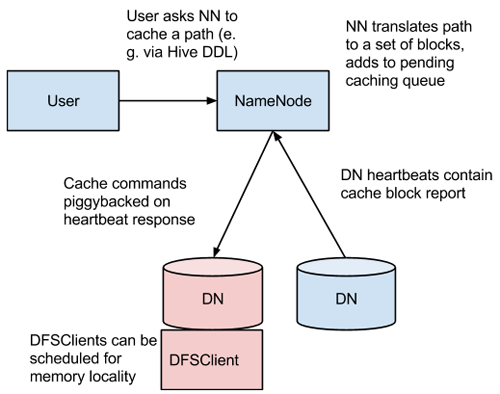Centralized cache management architecture
In a centralized cache management, the NameNode is responsible for coordinating all of the DataNode off-heap caches in the cluster. The NameNode periodically receives a cache report from each DataNode. The cache report describes all of the blocks cached on the DataNode. The NameNode manages DataNode caches by piggy-backing cache and uncache commands on the DataNode heartbeat.
The following figure illustrates the centralized cached management architecture.

The NameNode queries its set of cache directives to determine which paths should be cached. Cache directives are persistently stored in the fsimage and edit logs, and can be added, removed, and modified through Java and command-line APIs. The NameNode also stores a set of cache pools, which are administrative entities used to group cache directives together for resource management, and to enforce permissions.
The NameNode periodically re-scans the namespace and active cache directives to determine which blocks need to be cached or uncached, and assigns caching work to DataNodes. Re-scans can also be triggered by user actions such as adding or removing a cache directive or removing a cache pool.
Cache blocks that are under construction, corrupt, or otherwise incomplete are not cached. If a Cache directive covers a symlink, the symlink target is not cached.
Caching can only be applied to directories and files.

